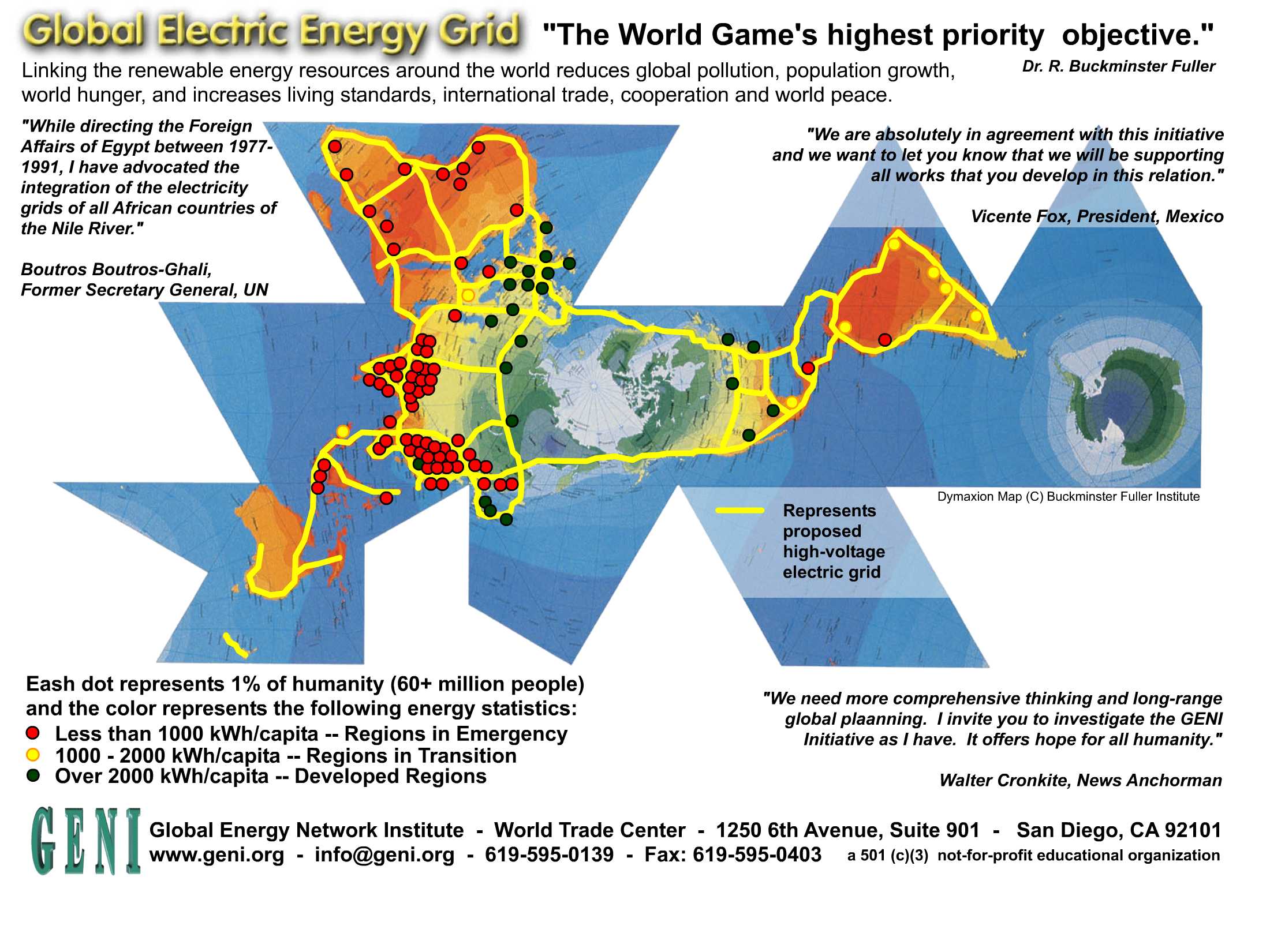While looking into the
global electric grid, I ran across this
OS Earth Global Simulation Workshop, a role-playing game engaging students in the challenges of running the planet. This is apparently a descendant of
Buckminster Fuller’s
World Game where he wanted students to aspire to...
"make the world work for 100% of humanity in the shortest possible time through spontaneous cooperation without ecological damage or disadvantage to anyone."
Still a worthwhile goal. And with computers, the range of games and simulations accessible to all has never been greater. These games and simulations can be tremendous tools for teaching and learning as documented by MIT alums Edery & Mollick in their book,
Changing the Game. Consider the popular Sim video game series by
Will Wright at Maxis, including
SimEarth. Curiously enough, Wright's first big success,
SimCity, was based on the Urban Dynamics work of MIT Sloan Professor
Jay Forrester, creator of the
System Dynamics method. Forrester went on to build the World Dynamics models which became the basis for the
Limits to Growth family of models (and popular books).
While the intellectual battle still rages between the so-called
peaknik doomsayers and their opposites, the
cornucopian doomslayers -- both with different prognoses about what is happening and/or will happen with our Planet Earth and our role in helping or hindering things -- what we can at least agree on is the need for more data, greater transparency, sharing of underlying assumptions, opening up of the underlying models -- whether mental, econometric, system dynamic, computational, etc -- and a relentless pursuit of greater understanding and truth. Games and simulations can play a transformative role here.
 Stef Wertheimer is probably most famous for having founded ISCAR, an Israeli precision metalworking business, and then selling a big chunk to Warren Buffett, his first non-US deal. But as this Business Week article by Stacy Perman titled An Entrepreneurial Path to Peace spotlights, Mr Wertheimer's Tefen business park -- and his ideas for a whole network of such prosperity parks in the vital Levant -- are what I find most inspiring. Writes Ms Perman...
Stef Wertheimer is probably most famous for having founded ISCAR, an Israeli precision metalworking business, and then selling a big chunk to Warren Buffett, his first non-US deal. But as this Business Week article by Stacy Perman titled An Entrepreneurial Path to Peace spotlights, Mr Wertheimer's Tefen business park -- and his ideas for a whole network of such prosperity parks in the vital Levant -- are what I find most inspiring. Writes Ms Perman... Since Tefen, Wertheimer has established four additional industrial parks in Israel following the same model. To date, they have nurtured 175 companies, employ 5,000 people, and in 2007 produced collective sales of $750 million, 80% from exports. In 2003, Wertheimer established his sixth park, in Gebze, outside of Istanbul, Turkey. Today, Gebze has 70 companies employing 300 people. [...] In Werteheimer's grand scheme, a host of similar industrial parks would stretch across the Levant, the non-oil producing nations along the spine of the former Ottoman Empire, through Lebanon, Turkey, Jordan, Palestine, and Israel. "There are 90 million to 100 million people quarreling about who's right," he explains. "Israel is more successful than the Arabs, and I believe peace will come if we have similar income levels. This we can have, but we have to change from an agricultural society to an industrial one. It can be done. We've done it here in the Galilee, which is 20% of Israel. It is made up of Arabs and Jews, and unemployment is 4% here compared to 7.5% in Israel."





















































